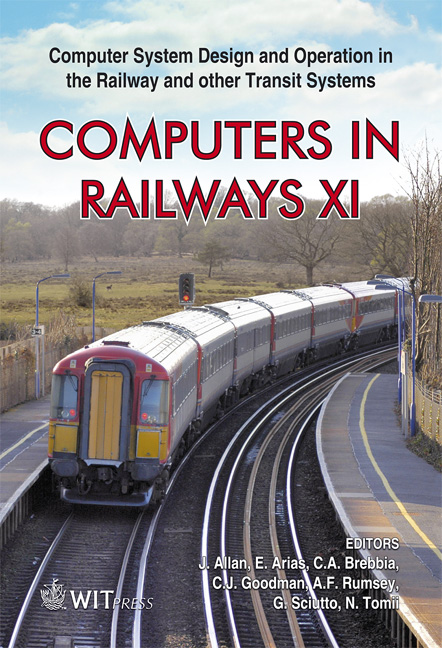Capacity Measurement With The UIC 406 Capacity Method
Price
Free (open access)
Transaction
Volume
103
Pages
10
Page Range
55 - 64
Published
2008
Size
677 kb
Paper DOI
10.2495/CR080061
Copyright
WIT Press
Author(s)
A. Landex, B. Schittenhelm, A. H. Kaas & J. Schneider-Tilli
Abstract
This article describes the fast and effective UIC 406 method for calculating capacity consumption on railway lines. It is possible to expound the UIC 406 method in different ways which can lead to different capacity consumptions. Therefore, this article describes how the methodology is expounded in Denmark. This includes how and where to divide the railway lines into line sections, how to analyze stations and junctions, and how to examine line sections with different amounts of tracks. Keywords: capacity, capacity analysis, compressed timetable graphs, timetable, UIC 406, railway, railway operation. 1 Introduction The UIC 406 leaflet published in 2004 [9] describes a simple, fast and effective method for evaluating the capacity consumption of railway lines. In the past years, this method has been applied in a number of studies (e.g. [1, 10]). However, it is possible to expound the UIC 406 method in different ways, which may lead to different results. In Denmark a number of analyzes have been conducted ([3–6]) to achieve a needed consensus between the infrastructure manager (Rail Net Denmark) and The National Railway Authority. This consensus has led to the development of a consistent method for examining railway capacity according to the UIC 406 methodology.
Keywords
capacity, capacity analysis, compressed timetable graphs, timetable, UIC 406, railway, railway operation.





